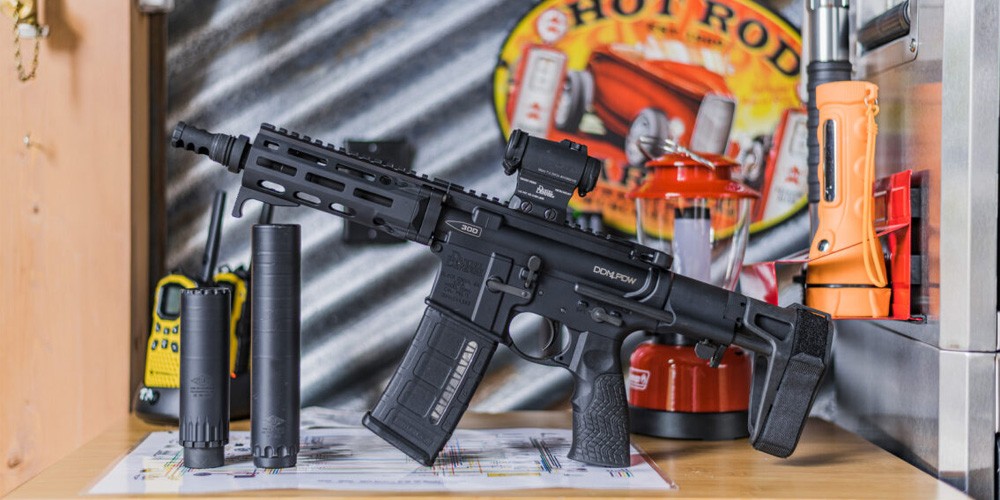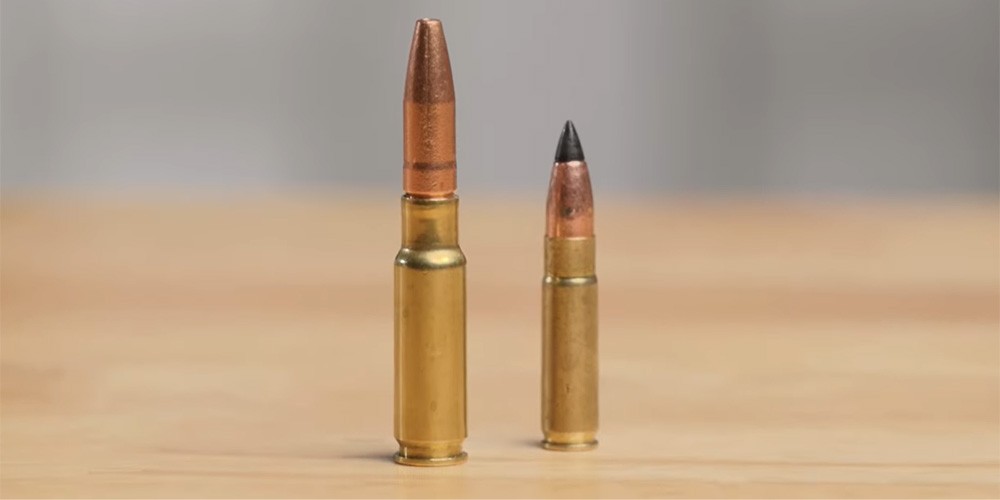When it comes to shooting, one of the biggest choices you’ll make is between subsonic and supersonic ammunition for different scenarios. At its core, subsonic ammo is engineered to travel slower than the speed of sound, while supersonic ammo exceeds that threshold, creating a sonic boom. In this guide, we’ll break down what subsonic rounds are, what makes a bullet subsonic, and how subsonic vs supersonic ammo compares for your shooting needs. We’ll also cover frequently asked questions like, "what is subsonic speed?" and "can you shoot subsonic without a suppressor?"
Whether you’re a seasoned shooter or just getting started, understanding these differences is key to choosing the right round for your application.
Table of Contents
What is Subsonic Ammo?
Subsonic ammo is designed to travel below the speed of sound. But what does subsonic ammo mean? Simply put, it means that the bullet’s velocity is kept under approximately 1,125 feet per second (fps) at sea level. This is the magic number that prevents the bullet from breaking the sound barrier, thereby avoiding the loud sonic boom—or “crack”—that accompanies supersonic rounds.
How Do You Make a Bullet Subsonic?
What makes a bullet subsonic?
Several factors contribute to a bullet remaining below the sound barrier:
- Heavier Projectiles: Subsonic rounds typically use heavier bullets, which naturally travel slower.
- Reduced Powder Charge: Less propellant is used to limit the velocity.
- Barrel Considerations: The length and twist of the barrel are optimized to stabilize a slower-moving projectile.
These design choices not only keep the bullet’s speed in check but also reduce recoil and flash, making subsonic rounds a favorite for quiet shooting applications.
Benefits of Subsonic Ammo
- Reduced Noise: Because subsonic rounds do not produce a sonic boom, they result in a much quieter shot—especially when paired with a suppressor.
- Less Recoil: Lower velocities mean less recoil, making them ideal for training and precision shooting.
- Hearing Safety: Quieter shots mean less risk of hearing damage, which is a big plus whether you’re at the range or on a hunt.
What is Supersonic Ammo?
Supersonic ammunition is built to exceed the speed of sound—typically going well above 1,125 fps. When these bullets break the sound barrier, they generate a sonic boom, a loud “crack” that becomes an inherent part of the gunshot’s noise signature.
Characteristics of Supersonic Ammo
- High Velocity: These rounds are designed for speed, which translates into higher kinetic energy on impact.
- Flatter Trajectory: The high speed results in a flatter trajectory, making it easier to hit distant targets.
- Increased Impact Energy: More velocity means more energy, which is advantageous for hunting and tactical scenarios.
- Sonic Boom: Even with a good suppressor, the sonic crack cannot be completely silenced, which is why many shooters consider switching to subsonic loads when noise reduction is a priority.


Subsonic vs Supersonic Ammo: Key Differences
The difference between subsonic vs supersonic ammo isn’t just about speed—it impacts every aspect of shooting performance. Here’s a side-by-side look:
| Characteristic | Subsonic Ammo | Supersonic Ammo |
| Speed | Below 1,125 fps (subsonic fps) | Exceeds 1,125 fps |
| Trajectory |
More curved due to lower velocity | Flatter trajectory; ideal for long-range shooting |
| Kinetic Energy | Lower energy, resulting in less recoil | Higher energy for greater impact and extended range |
| Noise Level | Quieter, especially with a suppressor (no sonic boom) | Louder due to the sonic boom plus muzzle blast |
Design and Ballistics
Subsonic ammunition offers several benefits, particularly when used with suppressors:
- Reduced Noise: Ideal for stealthy shooting scenarios, like plinking at the range or hunting.
- Less Recoil: Super light recoil, softest shooting experience which improves accuracy.
- Hearing Safety: Safer for the shooter's and bystanders' hearing.
Advantages of Each Ammo Type
Advantages of Subsonic Ammo
Noise Reduction:
- When you ask, "what are subsonic rounds?" the answer is clear—they’re quieter. This is especially true when used with a suppressor, as the absence of a sonic boom dramatically lowers overall noise.
Improved Accuracy at Shorter Ranges:
- The lower recoil and stable flight path help shooters maintain accuracy during rapid fire or competition.
Enhanced Hearing Protection:
- Less noise means a safer shooting experience without the need for excessive hearing protection.
Ideal for Urban and Tactical Use:
- Subsonic rounds are perfect for training and scenarios where discretion is key.
Advantages of Supersonic Ammo
Greater Range:
- Higher velocities translate to flatter trajectories, making supersonic rounds better for long-distance shooting.
Higher Impact Energy:
- This makes them ideal for hunting larger game where stopping power is critical.
Versatility in Unmodified Platforms:
- Supersonic ammunition is the standard for many calibers, providing reliable performance in a wide range of firearms.
Popular Subsonic Cartridges
The popularity of subsonic ammo has grown alongside the increased availability of suppressors. Here are some well-known subsonic cartridges:
300 Blackout Subsonic Ammo
Designed by AAC to have super and subsonic loads, one of the first widely adopted subsonic rifle cartridges. This round uses heavy .308 diameter bullets, 190+ Grains, and low powder charges for amazing sound performance with minimal recoil.
6.5 Creedmoor Subsonic Ammo
6.5 Creedmoor is traditionally a very fast supersonic ammo, but is now being loaded in subsonic variants for ultra-quiet plinking when shooting suppressed. These subsonic loads are ideal in bolt action rifles where the sound performance can really shine.
308 Subsonic Ammo
If you don't want to build a whole new rifle to shoot 300BLK, but you have a 308 Winchester in the safe, you’re in luck! You can now get subsonic 308 ammo, similar to 300 Blackout. You get all of the sound and recoil reduction, without having to get a new rifle.
556 Subsonic Ammo
5.56 subsonic ammo has become more popular recently, it generally uses heavy bullets, around 120 grains, paired with fast burning powders. These rounds are extremely quiet, but may not cycle in an AR15 rifle, they’re ideal for sue in suppressed bolt action riles.
9mm Subsonic Ammo
While most inexpensive 115 Grain 9mm training ammo is just over the sonic barrier, and moves around 1,200 FPS, there are tons of popular subsonic loads. Most subsonic 9mm ammo uses 124, 147, and higher grain bullets, and when paired with a suppressor have nearly no recoil and very minimal sound thanks to minute powder charges.
22 Subsonic Ammo
22LR subsonic ammo is commonly available, sometimes called “Standard Velocity.” This ammo is popular for plinking, competition shooting, small game hunting, and just having fun shooting suppressed. We have found the quietest subsonic 22 ammo to be CCI Quiet and CCI Standard Velocity.
8.6 Blackout Subsonic Ammo
300BLK’s big brother 8.6 BLK is a newer cartridge designed for both super and subsonic performance. It uses .338 diameter bullets and 1 : 3 twist barrels to maximize energy on target, and is rated for hunting large game animals. It is excellent when paired with a suppressor for mild recoil.
338 ARC Ammo
The newest cartridge from Hornady Ammo, the 338 aRC offers both supersonic and subsonic loadings making it highly versatile. The large .338 diameter bullet gives it great energy on target, making the 338 ARC a good subsonic hunting round or intermediate range cartridge.
375 Raptor Subsonic Ammo
Similar to the Blackout cartridges, the 375 Raptor can be fired supersonic or subsonic, and uses high mass bullets, perfect for quiet shooting and hunting. The 375 Raptor slings 400+ Grain bullets at 1000 FPS, with very minimal recoil, flash, and sound.
.45 ACP Subsonic Ammo
Not only is the 45 ACP the back-to-back World War champion, it is naturally subsonic which makes it an awesome round to shoot silenced. 45 has a low case capacity and shoots 200+ grain bullets, giving it great ballistics with nearly no recoil when shot with a good silencer.


Can You Shoot Subsonic Ammo Without a Suppressor?
A common question we hear is, "can you shoot subsonic without a suppressor?" The short answer is yes. Subsonic ammo, by its nature, produces less noise than supersonic rounds even without a suppressor. However, pairing subsonic rounds with a suppressor maximizes noise reduction by capturing both the muzzle blast and the already minimized report of the subsonic round. Without a suppressor, you will still notice a quieter report compared to supersonic rounds—but the difference is most pronounced when a suppressor is in use.
Key Points
- Suppressors and Subsonic Ammo: More effective noise reduction as both muzzle blast and sonic boom are minimized.
- Suppressors and Supersonic Ammo: Reduces muzzle blast but not the sonic boom.
Why do People Shoot Subsonic Rounds?
People see lower velocities, less energy, and question, why are subsonic bullets better? There are a few great reasons to use subsonic ammo compared to supersonics. We have already covered the massive difference in sound performance between subs and supers, but let’s look at a few other key uses.
Stealth and Discretion:
- For scenarios where keeping noise to a minimum is critical—such as tactical training—subsonic ammo is ideal.
Reduced Recoil:
- The lighter recoil from subsonic rounds means shooters can maintain better control and accuracy during rapid-fire sessions or competitions.
Hearing Safety:
- Lower sound levels are gentler on your ears and those around you, reducing the need for heavy-duty hearing protection.
Stability:
- Because subsonic rounds avoid transitioning through the transonic zone, they tend to remain stable throughout their flight, which can improve accuracy at moderate ranges.
Practical Applications:
- From competitive shooting events like competitive matches to quiet plinking sessions and even certain hunting scenarios, subsonic rounds offer a unique balance of performance and sound reduction.
Hunting with Subsonic Ammunition
Because subsonic rounds have lower speed, they work a little differently than supersonic bullets in hunting applications. Usually, these rounds use expanding projectiles to create effective hits on game animals. 300BLK, 86BLK, and 375 Raptor are all examples of subsonic hunting bullets that are effective on most animals in North America.
Some tried and true 300 blackout subsonic hunting ammo is Hornady’s 190 SUB-X load, it is incredibly accurate and is effective on small and medium sized animals, like feral hogs. We’ve also used the 190 Sub-X bullet in handloaded 308 subsonic ammo for hunting with good results!
Paired with a suppressor, these bullets achieve “Hollywood quiet” status, they’re incredibly quiet and make hunting even more enjoyable. We have seen many instances where we could take a shot on our desired target without disturbing the rest of the herd, which meant we got multiple hogs instead of just one. The best part is not having to wear hot, bulky hearing protection while enjoying the outdoors.
Subsonic Ammo FAQs
What is subsonic speed?
Subsonic speed is any velocity under the speed of sound—typically below 1,125 fps at sea level.
What are subsonic rounds?
These are ammunition loads engineered to remain below the sound barrier, ensuring a quieter shot by eliminating the sonic boom.
Is subsonic ammo better than supersonic ammo?
It depends on your shooting needs. Subsonic rounds are better for reducing noise and recoil, while supersonic rounds offer better range and energy.
What makes a bullet subsonic?
Factors include using a heavier bullet, reducing the powder charge, and optimizing the barrel characteristics to keep the velocity below the sound barrier.
Can you shoot subsonic ammo without a suppressor?
Yes, you can. Although subsonic ammo is quieter than supersonic by design, using a suppressor will further reduce the noise by capturing the muzzle blast.
Conclusion
Choosing between supersonic vs subsonic ammo ultimately depends on your shooting needs. Supersonic rounds are excellent for long-range shooting, delivering flatter trajectories and higher impact energy, but they come with a louder report due to the sonic boom. On the other hand, subsonic rounds are the go-to choice when silence, reduced recoil, and hearing protection are paramount.
At the end of the day, knowing what makes a bullet subsonic and understanding what is subsonic speed can help you select the right ammunition for your needs. Whether you’re competing in precision shooting matches, training on the range, or hunting quietly in the field, the differences between subsonic rounds and their supersonic counterparts ensure there’s a perfect load for every application.
By exploring the nuances of subsonic vs supersonic ammo, you can make an informed decision that maximizes performance while keeping your shooting experience safe and enjoyable.





